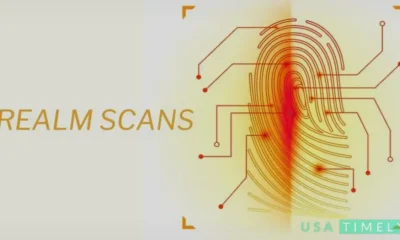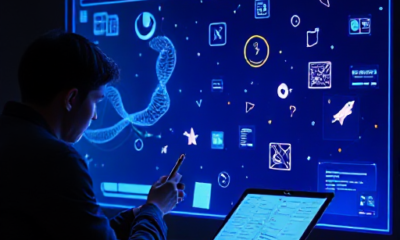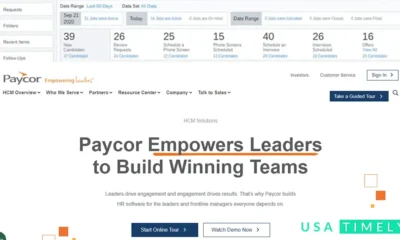Technology
Does Google Pixel 8 Pro Charge in Europe?
Yes, the Google Pixel 8 Pro can charge in Europe. The device supports USB-C charging, which is widely used across Europe. It also supports various power standards like USB Power Delivery (USB-PD) and most European outlets operate at 230V, which is compatible with the Pixel 8 Pro’s charging requirements. If you’re traveling from outside Europe, you might only need a plug adapter to fit the European socket but the phone itself will charge without issues.
Here’s an in-depth look at why and how this works, covering everything from the device’s charging standards to practical considerations for travelers.
Universal Charging with USB-C
The Google Pixel 8 Pro uses a USB-C port for charging, which is a global standard. USB-C is the same type of connection used for most modern smartphones, tablets, laptops and other electronic devices worldwide. This makes the Pixel 8 Pro compatible with a wide range of chargers, including those available in Europe.
USB-C chargers are ubiquitous in Europe, so you’ll easily find compatible charging cables or adapters if you need them during your trip. Even if you misplace or forget your charger, you’ll have no trouble finding a replacement in Europe.
Voltage Compatibility
Europe operates on a 230V electrical system with a frequency of 50Hz, while some other regions like the U.S. use a 110V system. Fortunately, the Pixel 8 Pro’s charger and many modern phone chargers are designed to handle a wide range of voltages, typically between 100V and 240V.
This means that the Google Pixel 8 Pro can safely charge in Europe without needing a voltage converter. The phone’s charger will automatically adjust to the higher European voltage, so all you need is the correct plug adapter to match the European outlets.
European Plug Types & Adapter Requirements
While the voltage is compatible, Europe has different plug types depending on the country you visit. Most European countries use plugs with two round prongs (commonly known as Type C, E and F plugs). Here are some common plug types you’ll encounter in Europe:
- Type C: The most widely used plug type in Europe, featuring two round prongs.
- Type E/F: Used in countries like France, Germany, and Spain. These also have two round prongs but are grounded.
- Type G: Used in the UK and Ireland, which have three rectangular prongs.
If your charger was purchased outside of Europe, you will need a plug adapter to fit these outlet types. A simple plug adapter will allow your existing charger to fit into European sockets. These adapters are cheap and widely available online or in local stores across Europe.
Fast Charging in Europe
The Google Pixel 8 Pro supports fast charging through USB Power Delivery (USB-PD), a widely used fast-charging standard. To achieve the fastest possible charging speeds in Europe, you’ll need:
- A USB-PD-compatible charger (the one that comes with the phone or a certified third-party one).
- A 30W USB-C charger, which can charge the Pixel 8 Pro up to 50% in just 30 minutes. If you have this charger, it will work seamlessly with European outlets, as long as you have a plug adapter.
Many European hotels and public places now feature USB-C outlets or charging stations, but these may not support fast charging. For the best results, it’s recommended to use your own fast charger.
Wireless Charging in Europe
The Google Pixel 8 Pro also supports wireless charging through the Qi standard, which is globally recognized and works across Europe. This means that you can use any Qi-certified wireless charger in Europe and it will work with your Pixel 8 Pro.
If you have the Pixel Stand (2nd Gen) or another high-power Qi wireless charger, you can wirelessly charge your device at up to 23W. Keep in mind that to use your wireless charger, you will still need a plug adapter for the charger itself, even though the charging process is wireless.
Many hotels, cafes and airports across Europe offer wireless charging stations for public use. While these chargers may not always provide fast speeds, they can be handy for topping up your battery.
Practical Tips for Charging the Pixel 8 Pro in Europe
When traveling with your Google Pixel 8 Pro in Europe, here are some practical tips to ensure you can charge your phone without any issues:
- Bring a Universal Plug Adapter: A universal travel adapter is a good investment. It will cover all the plug types used in Europe, from Type C to Type G.
- Use a Power Bank: A high-capacity power bank can be a lifesaver when you’re on the go and away from an outlet. Since the Pixel 8 Pro supports fast charging, look for a power bank that supports USB-PD for quick recharges.
- Check for USB Ports on Public Transport: Many trains, buses and planes in Europe are equipped with USB charging ports. These can provide a convenient way to charge while traveling, though they may not offer fast charging speeds.
- Consider a Dual-Port Charger: If you’re traveling with multiple devices (e.g., a laptop or a tablet), a dual-port charger with both USB-C and USB-A ports can allow you to charge two devices from one outlet, especially in situations where power outlets are limited.
Third-Party Chargers
If you prefer to use a third-party charger in Europe, make sure it’s a high-quality, USB-C PD (Power Delivery)-certified charger to ensure optimal charging speeds. Cheap, non-certified chargers might not provide the fast charging experience that your Pixel 8 Pro is capable of.
Many reputable brands offer travel-friendly chargers that are compact and designed for international use. Look for chargers that come with interchangeable plug heads, so you won’t need to bring multiple adapters.
Battery & Power Management in Europe
- Adaptive Charging: The Pixel 8 Pro’s adaptive charging feature adjusts charging speed based on your usage patterns to prolong battery life. When plugged in overnight, for instance, the phone will charge slowly to avoid overcharging.
- Battery Saver Mode: When traveling, if you’re away from a power source for extended periods, the Battery Saver and Extreme Battery Saver modes can help conserve battery life by limiting background activities and power-intensive apps.
Conclusion
Yes, the Google Pixel 8 Pro can charge easily in Europe. Thanks to its USB-C standard, fast charging capabilities via USB-PD, and dual-voltage support (100V-240V), it’s fully compatible with the European electrical system. Just make sure you have a plug adapter for the country you’re visiting and you’re good to go. Whether you’re charging with a USB-C cable, using wireless charging or tapping into public USB ports, the Pixel 8 Pro will charge efficiently in Europe.
FAQs
Does the Google Pixel 8 Pro charge in Europe?
Yes, the Google Pixel 8 Pro can charge in Europe. It supports USB-C charging, which is a universal standard and it can handle the 230V electrical system used in European countries without any issues.
Can I use a USB-C charger from Another Device to Charge my Pixel 8 Pro?
Yes, you can use any USB-C charger that supports USB Power Delivery (USB-PD) to charge your Pixel 8 Pro. However, ensure it’s a high-quality charger to avoid potential damage to your device.
What is the Maximum Charging Speed of the Pixel 8 Pro?
The Pixel 8 Pro supports wired fast charging at up to 30W using a compatible USB-PD charger. For wireless charging, it can charge at up to 23W with a compatible Qi wireless charger.
Is it Safe to Charge my Pixel 8 Pro with a European Charger?
Yes, as long as the charger is of good quality and supports USB-PD, it is safe to charge your Pixel 8 Pro in Europe. The device has built-in safeguards to protect against overcharging and voltage fluctuations.

Technology
Moddroid MeChat: Everything You Need to Know

Moddroid MeChat Love Secrets: What’s Inside?
Moddroid MeChat Love Secrets is a modified version of the popular dating and storytelling game MeChat. This version unlocks hidden features, premium choices, and exclusive love storylines, allowing players to explore romantic adventures without limitations. Many users prefer this modded version to fully enjoy the interactive dating experience without restrictions.
Moddroid MeChat Latest Version: What’s New?
The Moddroid MeChat latest version comes with enhanced features, improved gameplay, and bug fixes. Updates often include new character stories, additional chat interactions, and smoother performance. Players who download the latest version from Moddroid can expect better functionality and new romantic experiences with virtual characters.
Playmods MeChat: Another Source for Modded Versions
If you’re looking for alternative modded versions of MeChat, Playmods MeChat is another popular platform. Similar to Moddroid, Playmods offers modified MeChat APKs with unlocked premium choices, giving players more freedom in their interactions and story progression.
Apkmody MeChat: Safe and Secure Mod Downloads
Apkmody MeChat is another reliable source for downloading modified versions of MeChat. Many gamers trust Apkmody because it provides safe and regularly updated mod APKs. This platform ensures that players can access premium features without worrying about security risks.
MeChat Mod APK 64 Bit: Compatibility and Features
For those using high-performance devices, the MeChat Mod APK 64 Bit version ensures smoother gameplay and better compatibility. This version is optimized for 64-bit Android devices, reducing crashes and improving graphics performance. Users who prefer an enhanced gaming experience should look for this version when downloading MeChat mods.
Freeappmods MeChat: Downloading Mods for Free
Freeappmods MeChat provides a free and accessible way to download modded versions of MeChat. It offers unlocked choices, unlimited in-game currency, and premium character interactions, making it a great option for players who want a VIP experience without paying for in-app purchases.
MeChat Download: Where to Get the Game?
For those who prefer the official version, MeChat download is available on the Google Play Store and Apple App Store. However, modded versions can be found on platforms like Moddroid, Apkmody, Playmods, and Freeappmods. Players should choose their preferred version based on whether they want an unmodified or enhanced gameplay experience.
Liteapks MeChat: A Lightweight Alternative
For players who want a smaller, more efficient version of the game, Liteapks MeChat provides a lightweight MeChat mod. This version is ideal for devices with limited storage or lower processing power, offering the same exciting interactive storytelling experience with fewer system demands.
Conclusion
Whether you’re looking for Moddroid MeChat Love Secrets, the latest version, or alternative downloads like Playmods MeChat and Apkmody MeChat, there are plenty of options available. Each version offers unique benefits, from unlocking premium choices to providing a lightweight alternative. No matter how you choose to play, MeChat continues to be an engaging and immersive dating simulation game.
Technology
Disquantified.org: Everything You Need to Know

Disquantified.org: An Overview
Disquantified.org is an emerging platform that provides insights into business information, financial records, and corporate updates. Whether you’re looking for company registration details or searching for insolvency records, this website serves as a valuable resource for individuals and businesses.
Disquantified.org People Also Search for Login
Many users looking for Disquantified.org also search for login information, likely seeking access to business data, reports, or financial records. If you’re trying to log in, ensure you’re using the official website and the correct credentials to avoid security issues.
Www.gov.uk Companies House: Official Business Records
The UK Companies House website (www.gov.uk Companies House) is the official registry for UK businesses. It provides access to company formation details, financial statements, and director information. Users interested in Disquantified.org often visit Companies House to verify business legitimacy and compliance.
Ryan Valdema: Who Is He?
Ryan Valdema is a name frequently associated with business registrations, financial records, or corporate updates. While there is limited publicly available information, searches for him often appear alongside Disquantified.org, suggesting a potential connection to business management or regulatory records.
Company Registration Search: How to Check a Business?
A company registration search is essential for verifying business legitimacy and legal status. Websites like Companies House, Disquantified.org, and Find and Update Company Information Service allow users to look up registration numbers, company directors, and financial statements before engaging in business transactions.
Https Find and Update Company Information Service Gov UK Appeal a Penalty
If a company faces penalties for late filings or non-compliance, they may need to visit Find and Update Company Information Service to appeal a penalty. This government platform provides guidance on resolving disputes related to corporate filings and maintaining compliance with UK regulations.
Voir Social Companies House: Exploring Business Networks
Voir Social Companies House is another term that frequently appears in searches related to business data. It may refer to tracking social corporate connections, partnerships, and financial dealings through Companies House records. Businesses and investors often use this feature to analyze corporate networks.
Company Update: Keeping Business Information Current
A company update is necessary for businesses to stay compliant with legal requirements. Platforms like Disquantified.org and Companies House allow companies to update their registered addresses, directors, and financial statements to maintain transparency and avoid penalties.
How Long Do You Stay on the Insolvency Register?
If a company or individual is declared insolvent, they may appear on the UK Insolvency Register. The typical duration for being listed on this register is three years, but in some cases, it can last longer depending on the severity of the financial situation and legal proceedings. Checking this register helps businesses and investors assess financial risks before entering into agreements.
Conclusion
Disquantified.org serves as a key resource for business insights, corporate compliance, and financial transparency. Whether you’re looking for company registration search options, Companies House updates, or insolvency records, this platform, along with government services like Find and Update Company Information, provides essential tools for businesses and investors.
Technology
TurboGeek.org: Exploring Popular Searches and User Queries

What Is TurboGeek.org?
TurboGeek.org is a platform that caters to tech enthusiasts, providing information on programming, development tools, and open-source communities. Many users visit the site to explore GitHub repositories, software guides, and trending tech topics.
TurboGeek.org People Ask for GitHub: Why the Connection?
One of the most frequent queries linked to TurboGeek.org is “people ask for GitHub.” Since TurboGeek focuses on technology and coding, many visitors search for:
- GitHub repositories for open-source projects
- Guides on using GitHub for version control
- GitHub alternatives and comparisons
- Troubleshooting GitHub issues
These searches indicate that users rely on TurboGeek.org for developer-friendly content related to GitHub and software management.
Ask People: How User Queries Shape Content
The “Ask People” section of search engines often provides valuable insights into trending topics. Users visiting TurboGeek.org frequently look for:
- Tech tutorials and coding tips
- Software recommendations
- Security best practices
- Tech community discussions
This highlights the demand for knowledge-sharing platforms where developers and tech enthusiasts can find answers to their most pressing questions.
People Also: How Search Trends Guide Content Creation
Search engines often include a “People Also” section, which suggests related questions based on user behavior. Common queries related to TurboGeek.org include:
- What are the best coding resources?
- How to contribute to open-source projects?
- Where to find reliable software reviews?
- How to optimize GitHub repositories for collaboration?
By analyzing these questions, content creators and developers can tailor their resources to meet user needs effectively.
Keywords People Use: Understanding Search Behavior
Knowing the keywords people use when searching for TurboGeek.org can help in optimizing content and reaching a wider audience. Some commonly searched keywords include:
- “TurboGeek GitHub repositories”
- “Best tech forums for developers”
- “TurboGeek.org software reviews”
- “Open-source project collaboration”
By leveraging these keywords, websites can improve visibility and attract a tech-savvy audience.
Conclusion
TurboGeek.org serves as a valuable hub for tech enthusiasts looking for GitHub insights, open-source projects, and coding resources. With growing search trends focusing on “People Ask,” “People Also,” and relevant keywords, the platform continues to be a go-to resource for developers and software professionals.
Technology
www.TurboGeek.org: What People Are Searching For

What Is www.TurboGeek.org?
www.TurboGeek.org is a tech-centric platform that provides insights into software development, open-source tools, operating systems, and web technologies. Many users visit this site for expert guidance on coding, troubleshooting, and optimizing their tech stacks.
www.TurboGeek.org People Also Search for Chrome
One of the most common queries linked to TurboGeek.org is “people also search for Chrome.” This suggests that users visiting the site are often looking for:
- Chrome extensions for developers
- Chrome DevTools tutorials
- Browser optimization for coding
- Troubleshooting Chrome issues for web development
Since Chrome is widely used for web development, its connection with TurboGeek.org makes sense for developers and tech enthusiasts.
www.TurboGeek.org People Also Search for Example
The phrase “people also search for example” indicates that users are looking for practical examples related to various technologies. These may include:
- Example scripts for programming languages
- Code snippets for debugging
- Configuration file samples for different software
- Best practices and templates for development
This search pattern highlights the importance of hands-on learning in tech communities.
www.TurboGeek.org People Also Search for PHP
PHP is a widely used scripting language, particularly for web development. Searches related to PHP on TurboGeek.org suggest that users are interested in:
- PHP frameworks like Laravel and CodeIgniter
- PHP security best practices
- Optimizing PHP performance
- PHP vs. other backend technologies
As an open-source programming language, PHP remains a major topic of discussion among TurboGeek.org visitors.
www.TurboGeek.org People Also Search for Ubuntu
Ubuntu, a popular Linux distribution, is frequently associated with TurboGeek.org. Related searches indicate that users are looking for:
- Ubuntu server setup and configuration
- Ubuntu vs. other Linux distributions
- How to run development environments on Ubuntu
- Troubleshooting Ubuntu installation and updates
Since many developers prefer Ubuntu for software development and server management, it’s no surprise that this topic is commonly searched alongside TurboGeek.org.
www.TurboGeek.org People Also Search for CentOS
Similar to Ubuntu, CentOS is a Linux-based operating system widely used in server environments. Searches related to CentOS on TurboGeek.org include:
- CentOS vs. Ubuntu: Which is better for servers?
- Setting up CentOS for web hosting
- CentOS security and updates
- Troubleshooting CentOS system errors
With CentOS being a stable OS for enterprise use, its relevance to TurboGeek.org is clear.
Conclusion
www.TurboGeek.org is a valuable resource for tech enthusiasts searching for insights into Chrome, PHP, Ubuntu, CentOS, and real-world coding examples. These related searches reveal that the site caters to developers, system administrators, and tech professionals looking for reliable information on software and web technologies.
Technology
Yexex.GitHub: What You Need to Know

What Is Yexex.GitHub?
Yexex.GitHub is a GitHub-based repository or project that has gained attention among developers and tech enthusiasts. It is often searched for in connection with open-source coding, programming tools, and development resources.
Why Do People Search for Yexex.GitHub?
There are several reasons why users look up Yexex.GitHub:
- Exploring repositories for coding projects
- Finding scripts or software solutions
- Looking for collaboration opportunities in open-source development
- Accessing documentation and technical guides
Since GitHub is a platform that hosts millions of projects, a specific repository like Yexex.GitHub could be relevant to developers interested in unique coding solutions.
How Yexex.GitHub Relates to Open-Source Development
GitHub is one of the most popular platforms for version control and collaboration. A repository like Yexex.GitHub can be used for:
- Sharing open-source projects with the developer community
- Hosting documentation and guides for software tools
- Tracking changes and contributions to coding projects
- Facilitating discussions through GitHub Issues and Pull Requests
This makes it an essential part of the modern software development ecosystem.
How to Use Yexex.GitHub
If you come across Yexex.GitHub, you can explore its contents by:
- Visiting GitHub and searching for the repository
- Checking the README file for details on its purpose
- Exploring different branches and commits
- Cloning or downloading the project for testing
- Contributing through Pull Requests if it’s open-source
Following these steps can help developers get involved in GitHub projects efficiently.
Conclusion
Yexex.GitHub appears to be a GitHub-based project or repository that attracts developer interest. Whether it involves coding resources, software tools, or open-source contributions, it highlights the importance of GitHub as a global coding community. If you’re looking for GitHub-related projects, exploring Yexex.GitHub could be worth your time!
-

 Technology1 year ago
Technology1 year agoRise and Fall of Realm Scans: Exploring Paranormal Mysteries
-

 Technology1 year ago
Technology1 year agoIntegremos, What is it? Complete Information
-

 Celebrity1 year ago
Celebrity1 year agoMisty Severi – The Breaking News Reporter
-

 Technology4 months ago
Technology4 months agoStudy Fetch AI: Reviews, Pricing, and Free Alternatives
-

 Education1 year ago
Education1 year agoMyOLSD: A Guide to Login, Portals & Resources
-

 Business1 year ago
Business1 year agoHow to Recruit New Employees?
-

 Business1 year ago
Business1 year agoPaycor Company: Details, Login & Recruitment
-

 World1 year ago
World1 year agoTrump Nominated for Nobel Peace Prize Over Abraham Accords

















